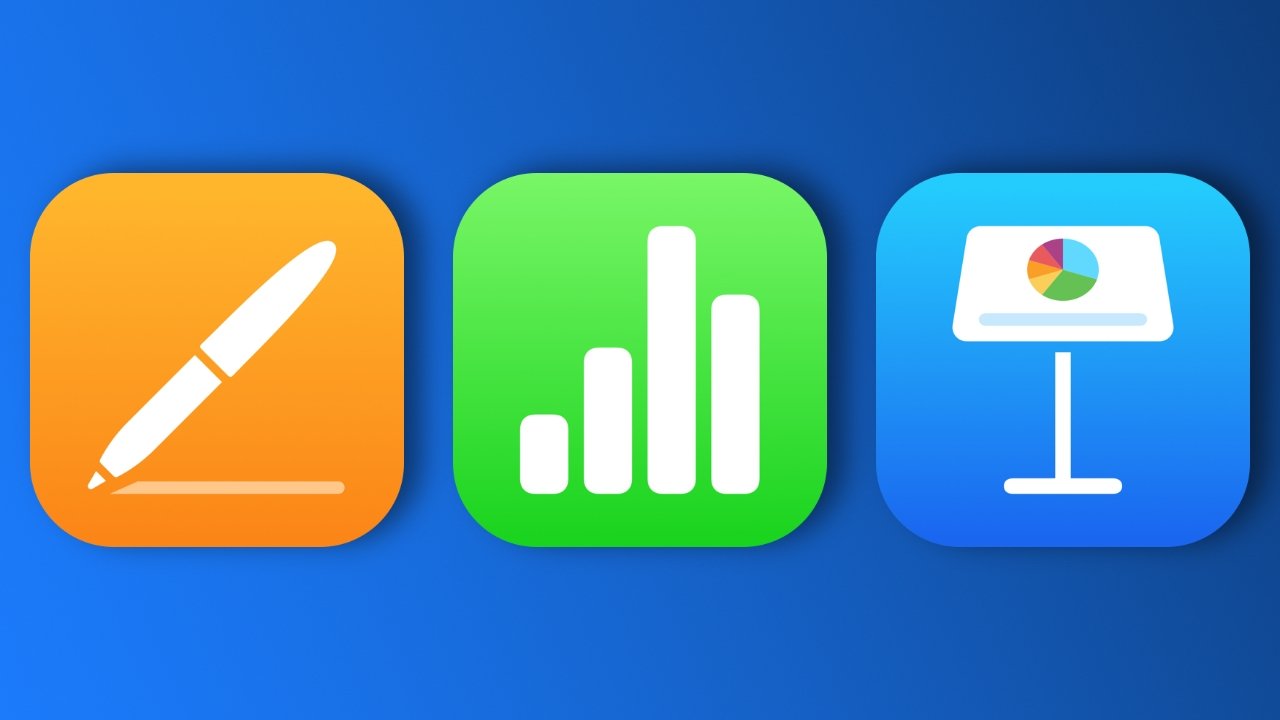Apple issues updates to Pages, Numbers, Keynote
Apple has released new versions of its three iWork apps, with Numbers getting performance improvements while Pages and Keynote gain refined features.

Apple updates iWork apps to version 12.0
Two months after releasing version 12 of its three productivity apps, Apple has released a 12.1 version that brings substantially greater additions. Initially released for iOS and iPadOS, the macOS Monterey versions are now also rolling out.
The Numbers update is the least significant. Apple says only that it gains "improved performance when inserting rows and columns in large tables."
Pages has three updates:
Whereas Pages has long been able to export what it calls Plain Text files, as opposed to RTF, Word or Pages. So it isn't clear what difference this makes.
Keynote's updates are clearer, however, as well as needing more explanation.
Read on AppleInsider

Apple updates iWork apps to version 12.0
Two months after releasing version 12 of its three productivity apps, Apple has released a 12.1 version that brings substantially greater additions. Initially released for iOS and iPadOS, the macOS Monterey versions are now also rolling out.
The Numbers update is the least significant. Apple says only that it gains "improved performance when inserting rows and columns in large tables."
Pages has three updates:
- Use mail merge to quickly create personalized letters, cards, and envelopes for multiple recipients
- Select from stylish new templates for event invitations and students certificates
- Export your Pages documents as TXT files
Whereas Pages has long been able to export what it calls Plain Text files, as opposed to RTF, Word or Pages. So it isn't clear what difference this makes.
Keynote's updates are clearer, however, as well as needing more explanation.
- Add subtle movement and visual interest to your presentation with dynamic backgrounds that move continuously as you transition from slide to slide;
- Select from new animated themes featuring dynamic backgrounds;
- Skip or unskip all slides in a collapsed group
Read on AppleInsider

Comments
It took them A DECADE to reinstate this?
It used to be that you could just drag a contact group directly from Address Book and drop it into an address field in any Pages or Numbers document, and - presto! - it would auto-generate a mailing to all of those recipients, including the proper salutation.
No, I'm not imagining this — they removed the feature (along with super easy trackpad-based resize and rotate) back when they feature-synced iOS and Mac versions of iWork.
So cool that they finally re-implement this essential functionality, years after it has almost entirely ceased to be useful, as paper mailing lists have long died for anything except weddings and funerals…
I haven't used it for paper mail in ages. I do use it periodically for e-mail.
In a business settings, I have various (random, depending on the purpose) groups of employees that need information, or I need information from. I do an export/extract of the employees e-mail address, first name, last name, etc. I can then use mail merge to send "personalized" e-mails to all the individual employees.
Note I didn't mention Pages in my original reply. My reply was about the usefulness of mail merge & use with e-mail. I use this periodically with Word, in the Windows environment. I would also find this useful on my personal Macs, for family, groups, etc. I assume the Pages "new" merge feature will also support e-mail, with mail merge.
- Use mail merge to quickly create personalized letters, cards, and envelopes for multiple recipients
In this case, it does seem to mean only paper.I just tested out the new features and all it does is pull your contacts card or a spreadsheet into merge fields and create a new doc with x number new pages in it populated with the data. Nothing else. This is nothing related to mail merge features in actual mail clients used for sending personalized email.
I wouldn't be surprised iWork it was rewritten in some early version of Catalyst as a test case, since it was officially released a few years after the dumbening. It also meant the iOS version wouldn't be inferior to the Mac version, which wouldn't have exactly reinforced Apple's "post-PC" iPad can do anything a PC (or Mac) can marketing at the time.